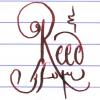Search the Community
Showing results for tags 'freeze resistant'.
-
This is a muted , bullet proof purple in the Polar series. Polar series consists of five inks. Black, Brown, Green, Blue and Purple. Comparison: Polar inks were developed for cold regions. In their original iteration they didn’t freeze, but had flow issues, I believe. In this updated version they turn into slush in subzero temperatures. TR 68 gr /Reverse fude #6 While I live in a relatively cold area, I have not found the need to ever use a fountain pen or pen for that matter outdoors. Frankly, I doubt if I can hold a pen in -30°C /-22°F with a gigantic mitt. And frankly I don't see the point of getting frostbite to prove a point. Midori / dry time decreases drastically on this paper, 9 seconds. Nib is medium Polar Blue and Purple are similar in behaviour: they are both very wet, and muted. So, your EF will probably turn in a fine. These i cellulose reactive inks, don’t behave well on cheap/ thin paper, that is they bleed through like there’s no tomorrow. HP 32 Polar Purple doesn’t shade, unless you use a wide nib. It’s a pastel/muted/flat colour. I like pastel. It's not distracting Shading on TR 68 gr/ #6 fude nib - There is shading on this paper. But dry times are above 20s on this paper. Dry time on Rhodia is almost immediate, with Midori is about 10 seconds. Fude nib/ Midori Polar inks have a bad rap in general. They can have some flow issues at time and need the right pen/nib combination. They stain (Green and Brown do) but a bit of Doyou/Red Rattlers and the stain disappears. Thought they are best to be married to one pen and they live happily ever after. I have Green in a Kaweco and brown in Chinese pen. They just do fine. Clairefontaine/ fude Rhodia - Water test. Note the water test was done immediately after writing. · Pens used: Jinaho 450 fude/ medium nib - Reverse · Papers used: TR 68 gr / Midori/ Rhodia/ Clairefontaine /HP32 · Shading: None. Pastel · Ghosting: On thin absorbent paper yes. With pens · Bleed through: on thin papers for sure. · Flow Rate: Wet. · Lubrication: Good · Nib Dry-out: Needs a well-sealed pen. · Start-up: No · Saturation: Muted · Shading Potential: None · Sheen: None · Spread / Feathering / Woolly Line: Not noticed. But I’m sure with thin absorbent paper it would feather and fly! · Nib Creep / “Crud”: Not noticed. · Staining (pen): I don’t know. · Clogging: None · Water resistance: Excellent · Availability: 90 ml bottles There is a strong possibility that this ink might stain plastic convertors.
- 13 replies
-
I'm just getting started in homemade inks. I live up in the North, where liquid water is regarded as unnatural. Ok, it's not that bad, but we do have cold winters, especially in hiking areas. Noodler has a line of inks called "Polar". The first generation of Noodler's Polar was resistant to much lower temperatures, but the later versions only work down to -15 - -20°c. Right now it's -25°c here, and -35°c is common. I would very much like to write in my journal while hiking, so I want to make a freeze resistant ink that can handle the coldest winters, let's say -45°c. When it comes to freeze resistant inks, what carrier liquids do they typically use? I usually use a pigment ink, but sometimes use KWZ Iron Gall ink. Pigment and iron gall have different requirements on their carrier fluids. Which freeze resistant carriers could I use for iron gall and pigment inks respectively?
- 3 replies
-
- freeze resistant
- cold
-
(and 2 more)
Tagged with:


